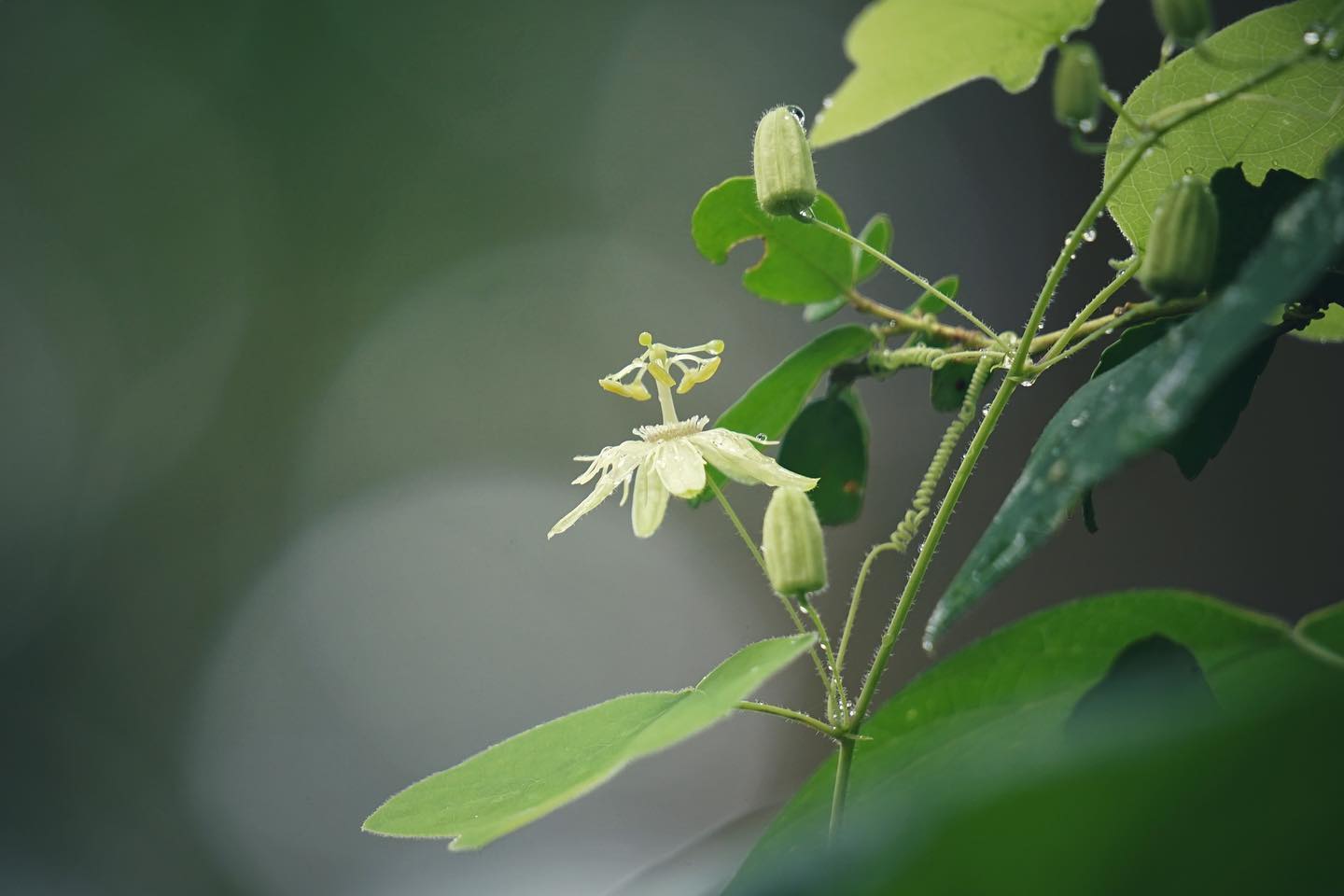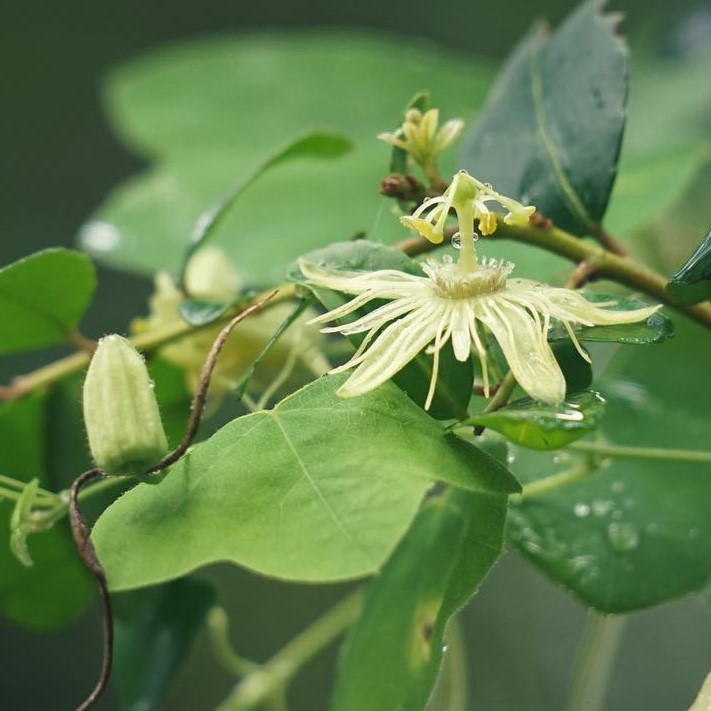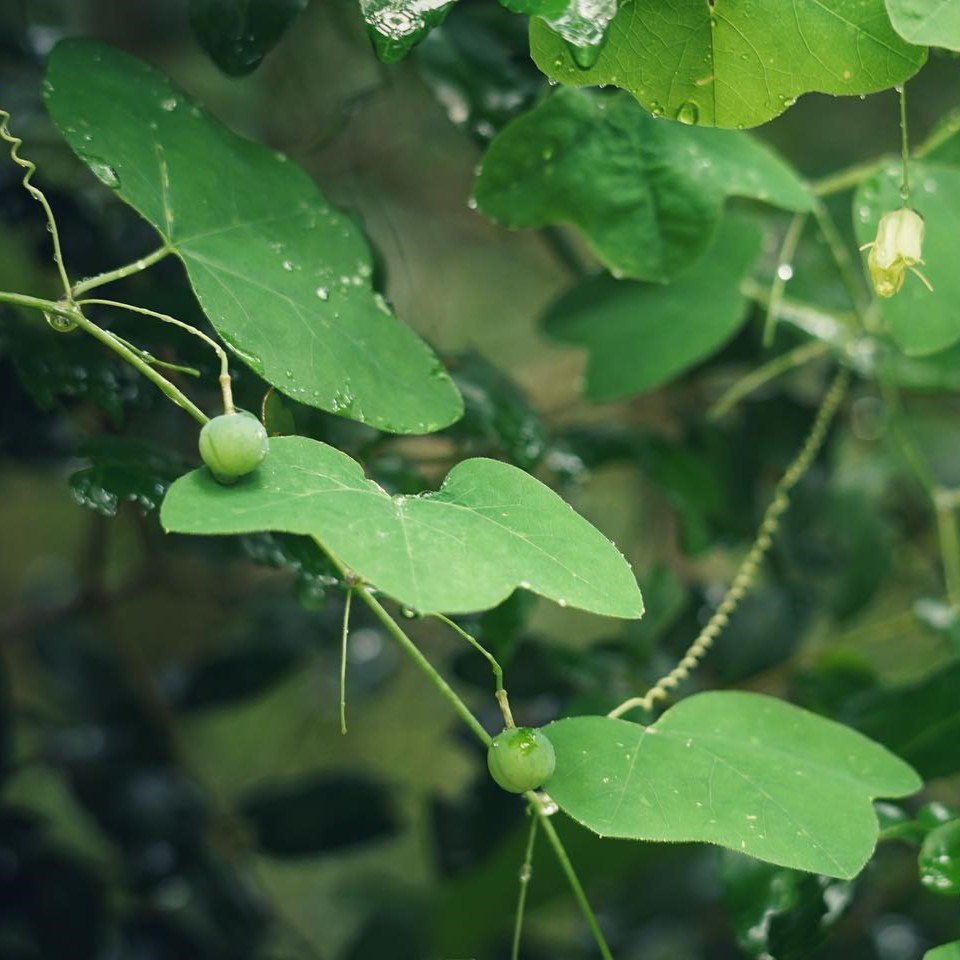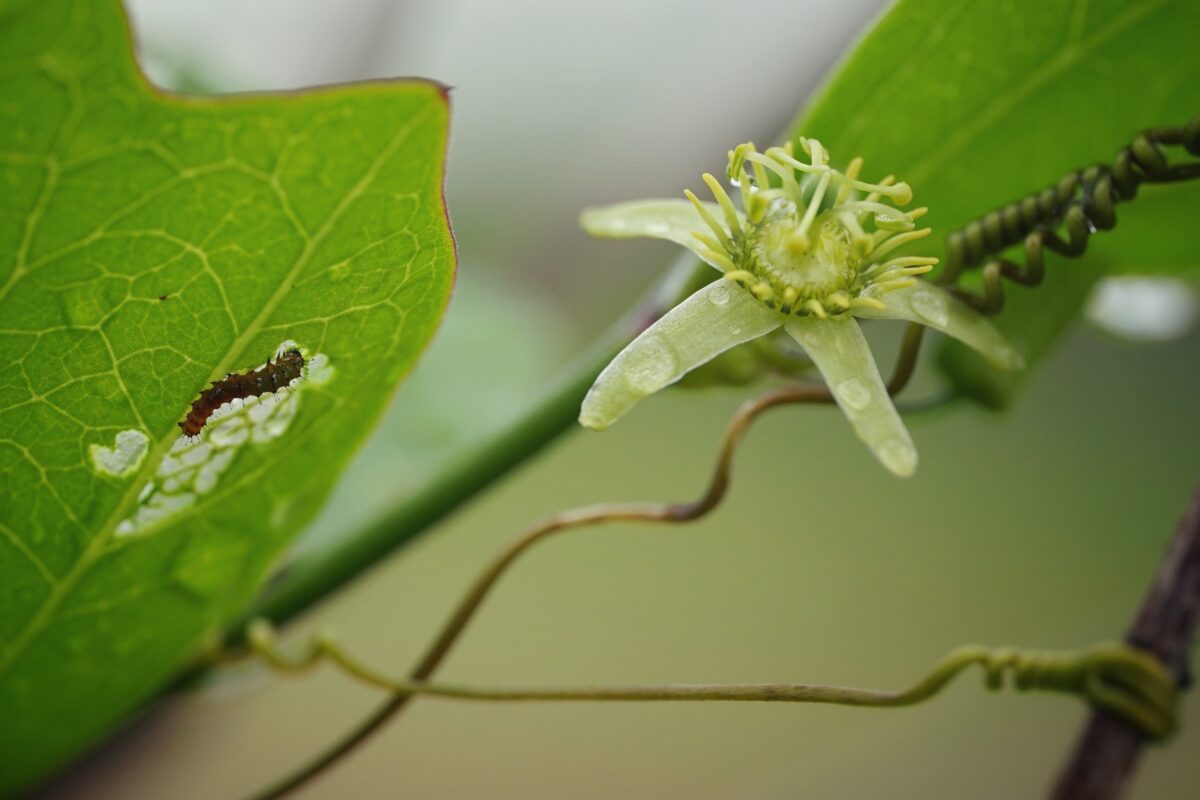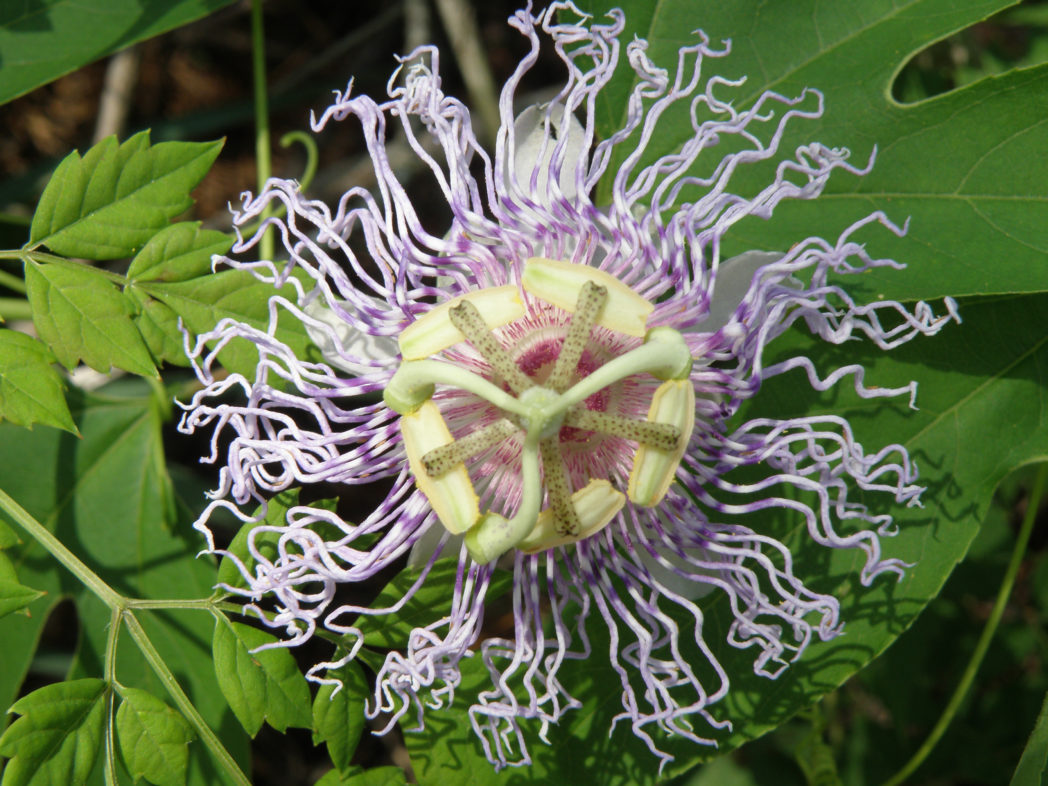Yellow passionflower
Pictured above: Yellow passionflower (Passiflora lutea) by Emily Bell. Click on terms for botanical definitions. View post as a PDF.
Occurring naturally in woodlands, thickets and maritime forests, Yellow passionflower (Passiflora lutea) is a beautiful, if unassuming, native vine. The hardiest of the Passionflower family, it can be found from Central Florida to as far north as Pennsylvania. It blooms in summer, setting fruit in fall. Wonderful for an array of wildlife, it attracts bees and butterflies, and birds eat its fruits. It is also a larval host for Zebra longwing (Heliconius charitonius), Gulf fritillary (Agraulis vanillae) and Julia (Dryas iulia) butterflies.
The small pale yellow flowers are about the size of a quarter with four to five petals and as many sepals. The corona has long pale yellow filaments. In the center of the flower, a globose pale yellow to light green ovary is topped with whitish to light yellow styles with yellow stigmas. Each flower only opens for one day. The plant’s small globular fruits start out green and ripen into a dark purple or almost blue-black color. Yellow passionflower’s three-lobed leaves can vary greatly in size but are typically wider than they are long. They are light green and can sometimes be variegated with white.
Yellow passionflower has a unique relationship with a very small and poorly understood groundnesting bee called the Passionflower bee (Anthemurgus passiflorae). This bee feeds its larvae solely on the pollen of Yellow passionflower. Although not currently documented in Florida, scientists are working to better understand the bee’s biology and distribution.
Family: Passifloraceae (Passionflower family)
Native range: North Florida into Central Florida as far as Hernando and Lake counties
To see where natural populations of Yellow passionflower have been vouchered, visit florida.plantatlas.usf.edu.
Lifespan: Perennial
Soil: Rich, moist and well-drained
Exposure: Full sun to partial shade
Growth habit: Vine, climbing to around 20 feet
Propagation: Seed, cuttings
Florida regions of landscape suitability: North, Central
Garden tips: A great addition to the pollinator garden, Yellow passionflower is not as aggressive or dense as Purple passionflower (Passiflora incarnata) can be. It grows well in a container, on a trellis or fence, or can sprawl along the ground.
Yellow passionflower is occasionally available from nurseries that specialize in Florida native plants. Visit www.PlantRealFlorida.org to find a nursery in your area.
Learn more about Yellow passionflower from the Institute for Regional Conservation.
For information on other Passiflora species, see:

